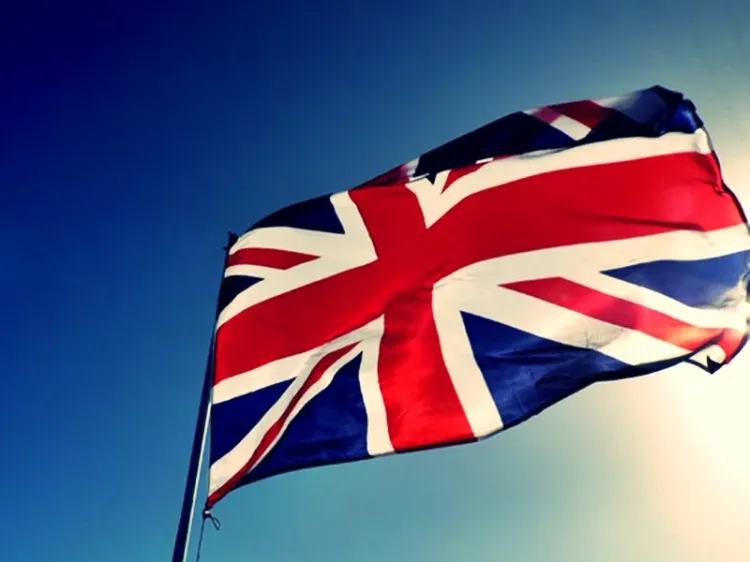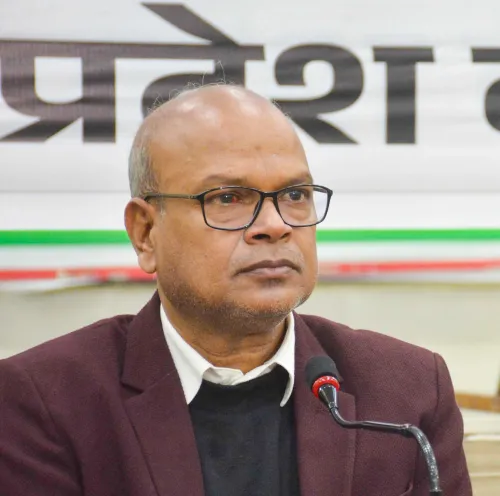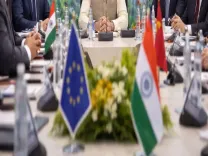What Did the 1809 Parliamentary Debates Reveal About Indian Commerce and British Monopoly?

Synopsis
Key Takeaways
- Debates revealed the interplay between commerce and colonial politics.
- Private traders struggled against the East India Company’s monopoly.
- Exorbitant shipping charges hurt Indian producers.
- Political motives often disrupted trade agreements.
- Cultural insensitivity led to widespread discontent among Indian troops.
New Delhi, Nov 3 (NationPress) In the far-off halls of the British House of Commons in 1809, pivotal discussions took place that seemed to center on the mundane details of the East India Company’s private trade. To the untrained eye, these were debates about shipping fees, cargo capacities, and requests for monetary assistance. Yet, when examined from an Indian perspective, these dialogues recorded as debates were far more significant than mere business disagreements.
They starkly showcased the entangled realities of colonial exploitation, where commercial disputes were inextricably linked to political dominance, military aggression, and the systematic extraction of wealth from a subcontinent. For India, this was not merely a discussion about trade partners, but rather a contest over the insatiable desires of its rulers.
A Clash of Titans: Private Traders vs. The Company
The key contention driving these discussions was a fierce rivalry between individual British traders and the Directors of the East India Company. The private merchants, feeling wronged, sought equitable access to the expansive Indian market, accusing the Company of leveraging its monopoly to stifle competition.
From an Indian viewpoint, this was not a battle for trade freedom, but a conflict over the division of spoils. Both sides were foreign entities competing for a larger share of the profits generated from Indian labor and resources.
The grievances of the private traders, voiced by a Member of Parliament, Mr. Prendergast, exposed the mechanics of the Company’s oppressive control:
Exorbitant Shipping Charges: Merchants dependent on Company shipping were subjected to rates as high as £44 per tonne, significantly outstripping the costs they had anticipated.
This unreasonable inflation of fees was deemed not only as “injustice and oppression” but also as blatant “fraud,” as the Directors exploited their absolute power to disregard their own published agreements. For Indian producers and artisans, these inflated charges resulted in diminished returns for their products, as foreign merchants passed the costs down the supply chain.
The Primacy of 'Political Motives': A frequent complaint was that ships designated for private merchants were often redirected for what the Company referred to as “political purposes.”
These diversions left merchants “totally abandoned,” with their goods stranded and their investments locked up. From an Indian perspective, these “political purposes” were the campaigns of conquest and territorial expansion, exemplified by Marquis Wellesley, which were undermining native sovereignty.
This situation unveils a fundamental truth about British rule: imperial ambitions and military strategies consistently overshadowed the purportedly stable and predictable frameworks of commerce.
Flight to Foreign Flags: The oppressive measures implemented by the Company had a predictable yet revealing outcome. According to Mr. Howorth, the actions of the Directors had driven British capital into illicit trading under foreign flags. Consequently, while the Company stifled its fellow countrymen’s trade, American, Portuguese, and other neutral vessels flocked to Indian ports, engaging in a robust commerce that Britain sought to monopolize.
For India, the ultimate impact remained the same: its wealth continued to flow outward, enriching foreigners, with the only distinction being the flag adorning the ship’s mast.
Excuses and Evasions: The Company’s Justifications
In response to these allegations, the Company Directors and their supporters provided justifications that, from an Indian standpoint, seemed little more than self-serving evasions. They claimed they were only obligated to supply a limited amount of shipping—3,000 tonnes—and that the disruptions were due to war, a factor beyond their control.
This defense was transparently flawed. The very wars causing the disruptions were of the Company’s own creation. The debates linked the Company’s financial distress directly to the aggressive policies of figures like Marquis Wellesley, whose actions had been condemned by the Directors themselves for violating their own laws.
The renewal of a Select Committee to scrutinize the Company’s affairs was prompted by a request for public assistance, a direct consequence of the “extravagant expenditures” and “fraud and corruption” that characterized this era of conquest.
This financial desperation, which led to the exploitation of private traders, was rooted in the military subjugation of Indian states. Essentially, the Company defended its commercial malpractices by citing the repercussions of its political transgressions.
Glimpses of the Indian Reality: Discontent and Rebellion
While the debates were focused on British interests, they offered chilling insights into the real-life consequences of these policies within India. The discussions were not merely theoretical. A parliamentarian, Mr. Howorth, highlighted the stark reality of the situation in Parliament, discussing the widespread discontent among the Company’s officers and the rising dissatisfaction of the native troops.
This was a direct outcome of the arrogant and culturally ignorant policies being enforced.
He specifically mentioned the “system of imposing king’s officers into the native corps,” individuals who were “unfamiliar with their language and ignorant of their customs.” This practice, elaborated on in other texts, generated deep resentment within the military framework that upheld British dominance.
Furthermore, the reference to the mutiny at Vellore served as a powerful and “appalling” lesson. The loss of hundreds of British soldiers and nearly a thousand total casualties over the enforcement of regulations regarding a “turban and a whisker” illustrated the absurdity and peril of imposing British norms on Indian forces.
It was a clear indication that the foundations of British authority were more fragile than many in London perceived, resting on a bed of simmering cultural and religious grievances.
Conclusion: An Integrated System of Control
Ultimately, these parliamentary discussions regarding private trade reveal, from an Indian perspective, that the various dimensions of British engagement—commercial, political, and military—were not distinct but were part of a cohesive system of imperial control.
The push by private traders for increased access, the Company’s defense of its monopoly, the allegations of “fraud and corruption,” and the excessive “lavish expenditures” were all facets of an internal struggle among the British over how best to exploit their Indian territories.
The Company’s financial crisis, which necessitated a parliamentary committee and a plea for public funds, was a direct result of its wars of “aggrandizement” and the “seizure of kingdoms.”
The commercial grievances of private traders arose from their interests being sidelined in favor of military ambitions. The growing discontent within the native army was a response to the cultural insensitivity accompanying this assertion of absolute power.
While Members of Parliament debated, from an Indian perspective, the conclusion was already evident: whether under the Company’s monopoly or a more “open” system, the fundamental aim of British presence was wealth extraction and power consolidation, with India bearing the immense cost.
(The author is a researcher specializing in Indian History and contemporary geopolitical matters)










